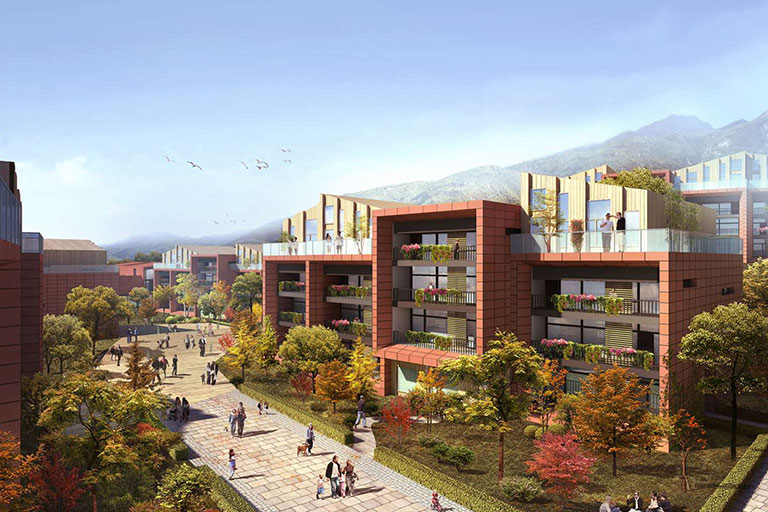A collaborative urban development project between China and Germany is harmonising environmental protection, energy efficiency and economic advancement.
Across the Yellow Sea from South Korea, on China’s north-eastern coastline, sits a truly unique urban space that is reimagining what sustainable development can achieve.
A collection of ultra-low-energy buildings supported by renewable energy systems, form the core of the Sino-German Eco Park Qingdao, making it a standard bearer of innovative solutions for climate protection and energy efficiency.
The driving idea behind the Eco Park is the interweaving of economic policy with sustainability. Instead of viewing these as necessary, but mutually exclusive targets, businesses in Qingdao can make progress on both aims through an urban and industrial space that is fully supportive of both.
One of many such cities across China, the Sino-German Eco programme uses international cooperation and the power of Germany’s experience with advanced urban sustainability and business-friendly legislative frameworks to create a true paradigm shift.
Building a more sustainable future
In the core area of the park sits the Sino-German Ecological Park Passive House Experience Centre. A steel-built, low-energy building that covers seven floors and 14,000m², the centre is a ‘passive house’ that eliminates the need for traditional heating and cooling.
Based on German builds of the 1980s that combine high comfort and low-energy consumption, the centre is a sealed structure built of precision-engineered interlocking steel components and durable insulation materials. The air tightness means that indoors are maintained at 18-26°C throughout the year.
The building’s carefully constructed envelope, sealed maintenance structure and efficient heat or energy recovery fresh air system, is powered by photovoltaics and geothermal heat pumps that result in estimated annual energy savings of more than 1.3 million KWh, reducing operating costs by around 550,000 yuan ($79,000).
An encapsulation of the programme’s ethos, the centre functions as a showroom, meeting hall and office space, as well as featuring high-end residential apartments that show environmental protection need not come at the cost of comfort.
“The Passive House Technology Centre is a building that’s perfect for the environment and the perfect living environment. This building is a seed,” said Mao Shiqing, General Manager at Sino-German United Group Co. Ltd.
Shiqing hopes that this building can set new construction standards across China. As part of this aim, the building’s maintenance systems are digitised, using building information modelling and intelligent building systems to generate data on performance that can inform future urban planning.
 Steel-built passive house designs can save millions in KW hours of energy every year
Steel-built passive house designs can save millions in KW hours of energy every year
Building a successful city
The Passive House Experience Centre is just one part of an almost living organism. Planners and developers view the city as a holistic entity, where overlapping systems become force multipliers for sustainability.
Buildings, energy generation, transportation, waste management, water and green spaces are all considered together when making planning decisions and it is hoped this can act as a model for other urban developments.
The Eco Park is also developing world-class facilities and supportive policies to create an environment where innovation can flourish. The hope is that a cluster of leading tech firms and national R&D organisations will see the opportunity to advance their strategic aims while ensuring their output is as sustainable as possible.
Buildings continue to generate a large proportion of the planet’s emissions, but with innovative steel-built construction techniques and an ethos of viewing sustainability and economic progress as being inextricably linked, a more sustainable future is on the horizon.
Images: Sino-German Urbanisation Partnership